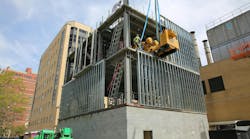Last year, one of the plant’s 15 production lines produced 10% of total revenue and 18% of total profit. Unfortunately, this line has seen frequent interruptions in recent months and orders are often late
The maintenance department responded by creating an “A Team” just for that line, keeping spare parts and special tools in a locker near the line, and other measures that have slashed repair times. The “A Team” has undergone extensive training, including performing mock repairs in a training lab set up to teach them how to perform specific repairs and check their performance for speed and accuracy.
The plant engineer wants the focus to shift to prevention, but all the recommended PMs are being done. Where do you look?
Speed and accuracy are important when repairing critical equipment, but thoroughness is also important, It arguably trumps the other two. Finishing a repair quickly but partially creates a vicious cycle of quickly done partial repairs.
If the “A Team” is not recording the reason code for each repair, have them do so going forward. Monthly, check the reason codes for patterns; not just repeat failures, but also related failures. Based on those findings, implement corrective repair (including equipment modification) and preventive and predictive maintenance.
In parallel with this, look for systemic root causes such as grounding or bonding deficiencies and power anomalies (e.g., with the proper equipment such as power analyzers).




